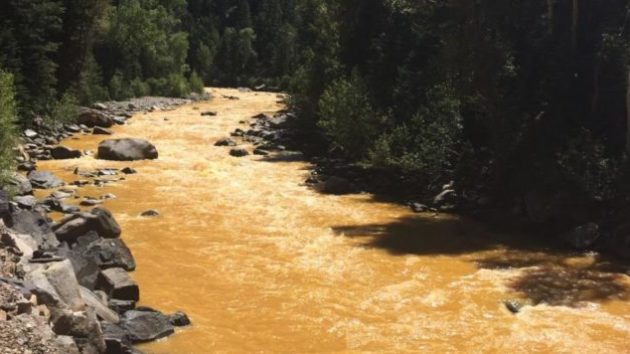Will EPA Hold Itself to a ‘Higher Standard’ Over Gold King Mine Spill?
KEY TAKEAWAYS:
- No one at @EPA will be prosecuted for causing a 2015 Colorado river spill.
- If a business would have accidentally polluted a river, @EPA would’ve thrown the book at it.
After causing three million gallons of toxic waste to spill into a Colorado river, we’re still waiting for EPA to hold itself to a “higher standard.”
In August 2015, EPA workers caused mine waste to burst from Colorado’s Gold King Mine into the Animus River, turning it a sickly yellow and polluting water supplies in three states.
After EPA’s Office of Inspector General sent the Justice Department what it thought was evidence of criminal wrongdoing, federal prosecutors chose not to prosecute, leaving any possible punishments against government employees to EPA, the Denver Post reports:
The U.S. Attorney in Denver will not prosecute an Environmental Protection Agency employee involved in the Gold King Mine disaster, leaving it to the agency to determine administrative action against the employee.
A decision made Oct. 6 was based on information submitted by the EPA’s Office of Inspector General to federal prosecutors after a year-long internal probe.
Instead of a criminal prosecution, the EPA’s internal investigators “will submit a report of an investigation to the agency that details the findings of our investigation,” OIG spokesman Jeff Lagda said in response to queries.
“The agency, not the OIG, will then determine what administrative action they may take against the employee based on that report,” Lagda said. “The EPA will have to report to the OIG what administrative action the EPA will undertake.”
Soon after the spill last year, EPA Administrator Gina McCarthy vowed, “We are holding ourselves to a higher standard than we would hold other responsible parties.” But earlier this year, McCarthy talked down the damage done by her agency. State officials were not pleased.
There have been plenty of investigations. None made EPA look good.
An EPA internal investigation found that the spill was “likely inevitable” because workers onsite didn’t take water pressure readings from inside the abandoned mine.
Why? Because EPA felt it “would have been quite costly and require much more planning and multiple field seasons to accomplish.”
Internal EPA investigators also noted that the agency didn’t plan for the possibility of a spill that could threaten a river popular with tourists and a necessity for farmers and local residents.
The Interior Department’s investigation was just as tough. It chastised EPA for having “little appreciation for the engineering complexity” and for having “a general absence of knowledge of the risks associated with these [abandoned mining] facilities.”
Then there was the OIG investigation that referred its findings to federal prosecutors. The Hill reports, “OIG found that the unnamed employee may have broken federal water pollution law and may have made false statements to law enforcement officials regarding the Gold King Mine spill.”
What if a private party and not EPA were responsible? EPA would throw the book at them, as they do all the time:
- Earlier this year, America’s oldest brewery, Yuengling, agreed to a $2.8 million settlement and $7 million in improvement costs over Clean Water Act violations.
- To protect his land from being washed away from future flooding, an Oregon farmer faces $100 million in fines for building a retaining wall near a river without an EPA permit after consulting with the Army Corps of Engineers.
And anyone lying to the agency would be in serious trouble.
It should be noted that EPA has paid out more than $5 million to state and local governments to reimburse them for emergency response expenses. But is that the “higher standard” Administrator McCarthy promised?
Anyone public or private should be held accountable for violating federal rules and environmental damage they cause.
EPA “will not hesitate” to vigorously hold private parties accountable for breaking environmental laws, but will it do the same to itself? It’s been over a year since the spill, and we’re still waiting.
This is something to think about if EPA’s Waters of the U.S. (WOTUS) rule survives its court challenge (hopefully not), and the agency is allowed to enlarge its authority over land use by claiming jurisdiction over waters, including ditches, canals, ponds, and wetlands, as far as 4,000 feet from a navigable water.
MORE ARTICLES ON: ENVIRONMENT, REGULATORY REFORM
EDITORS NOTE: The featured image of the Animas River. Photo credit: Riverhugger. Licensed under a Creative Commons Attribution-Share Alike 4.0 International license.



Typical from this “most transparent” of Administrations. Nothing will change unless the people Elect Trump. Then, it MIGHT get changed, but there’s no guarantee.